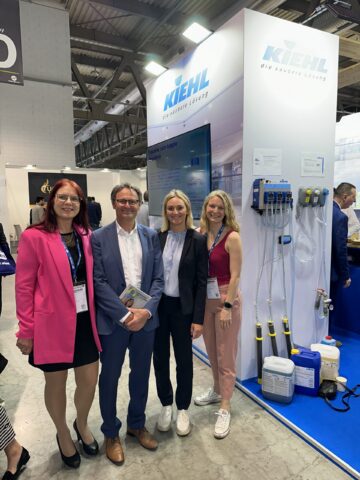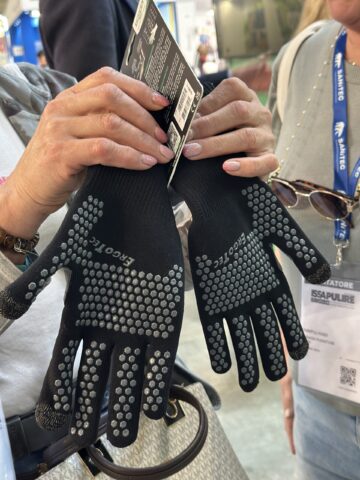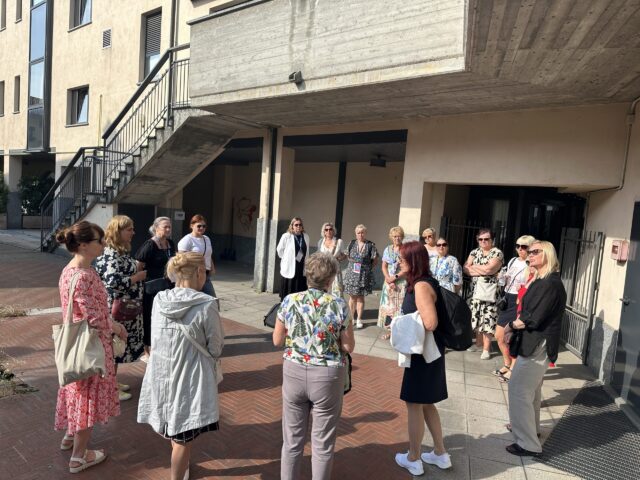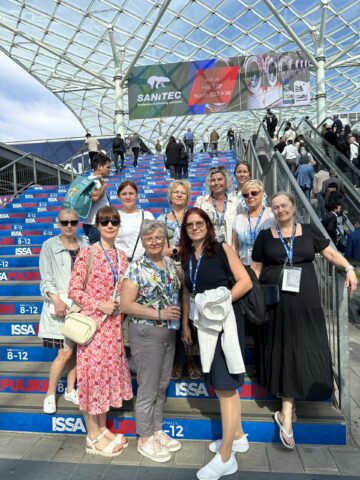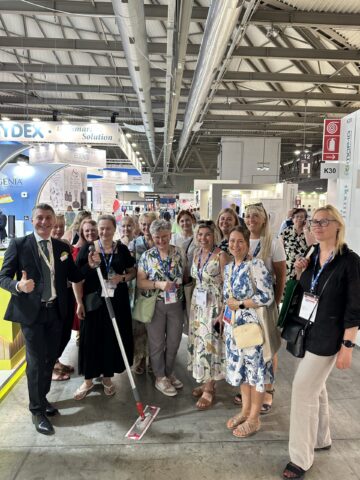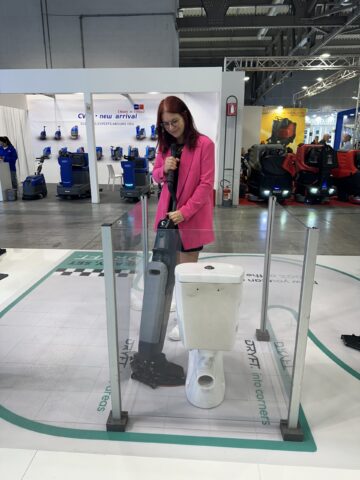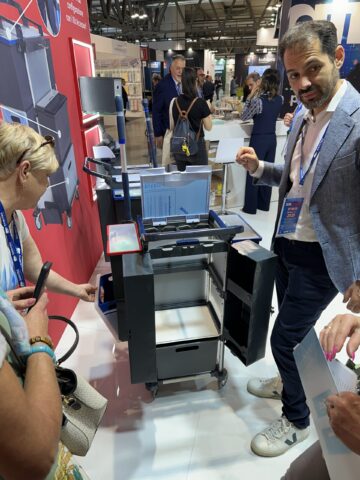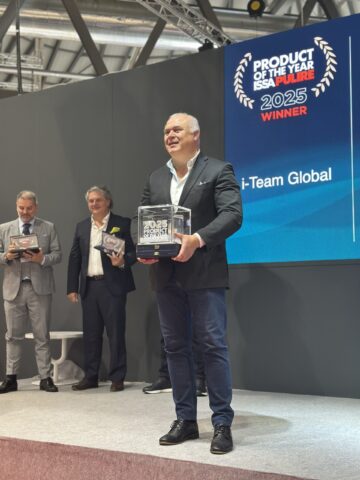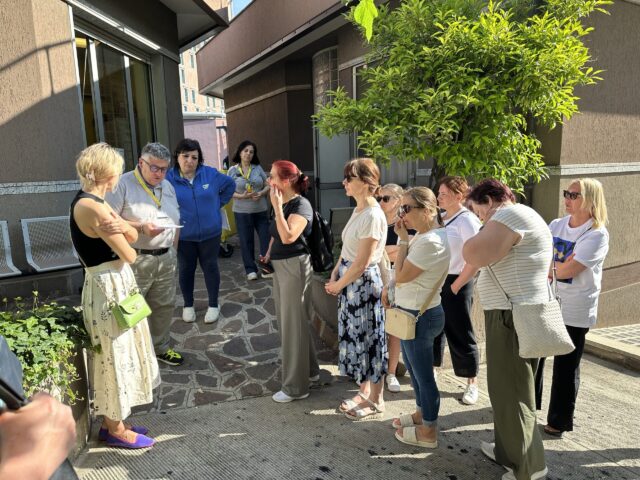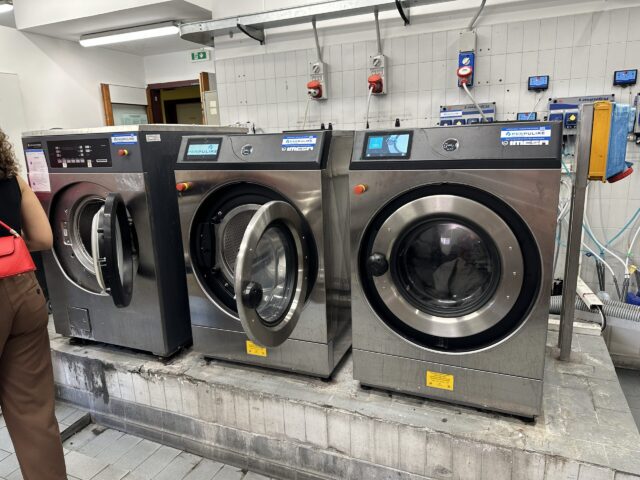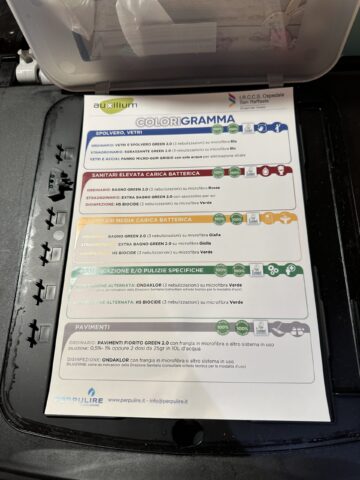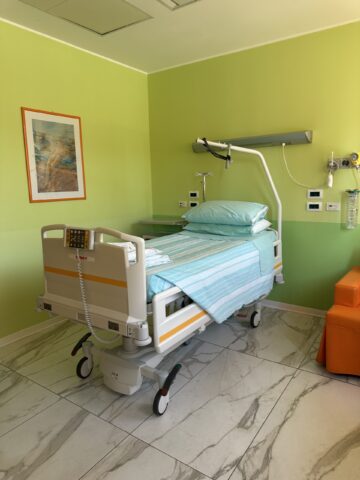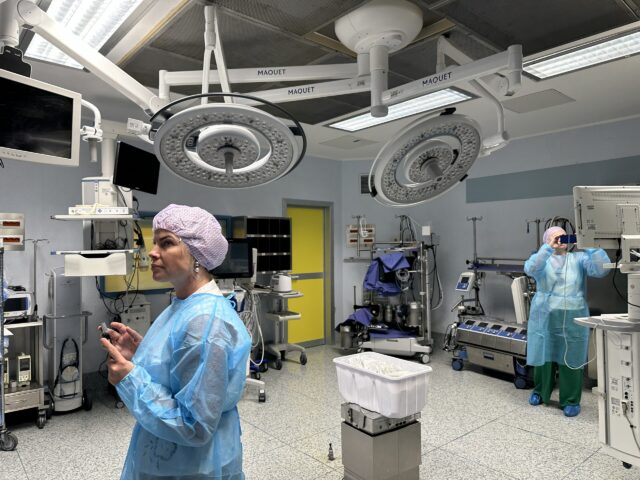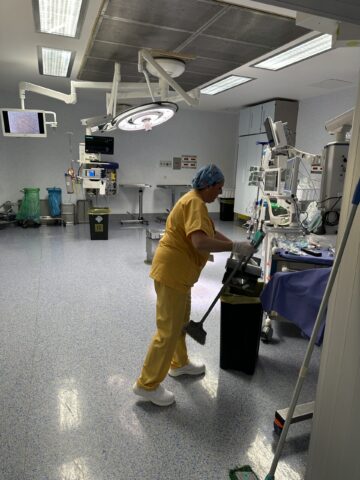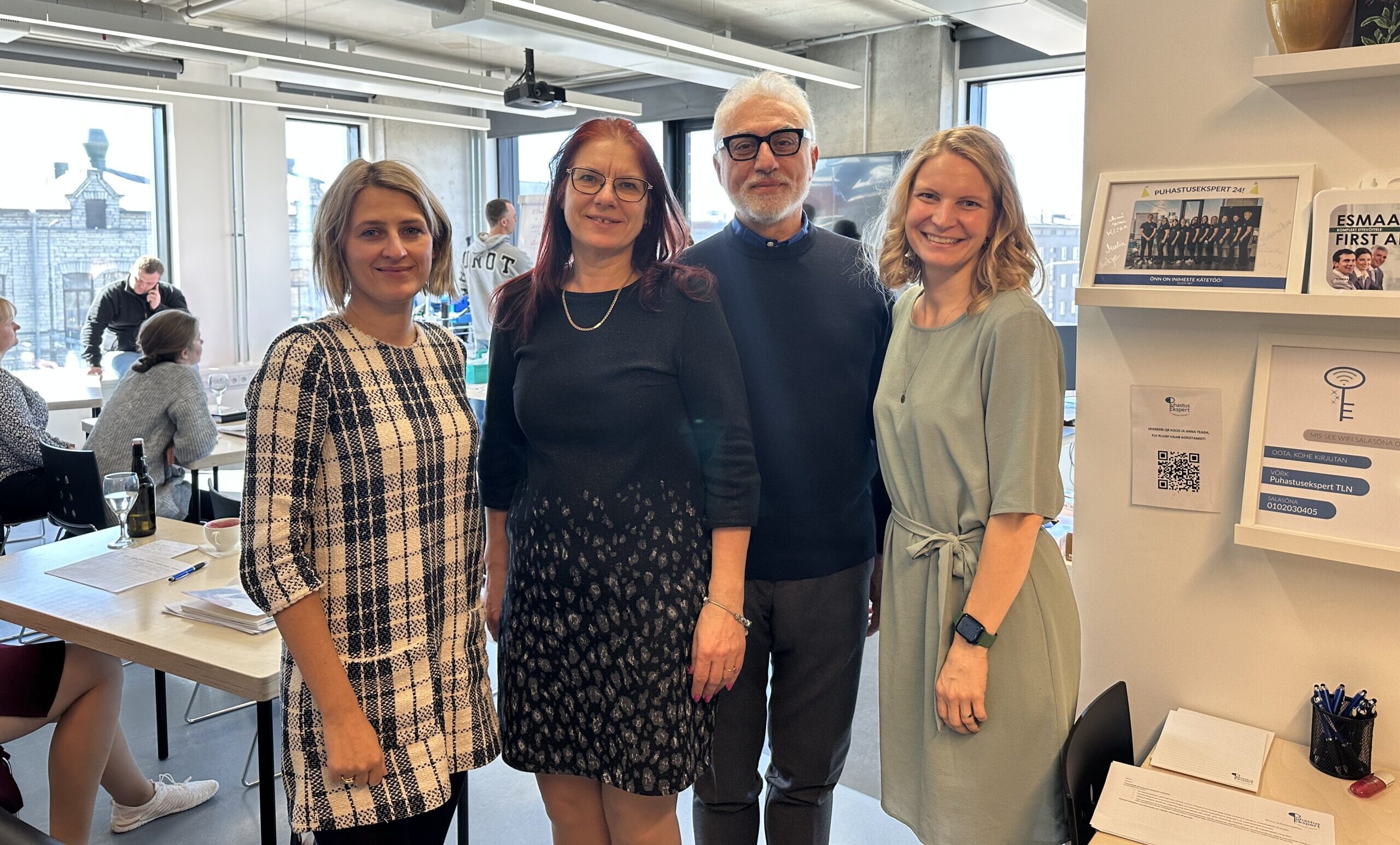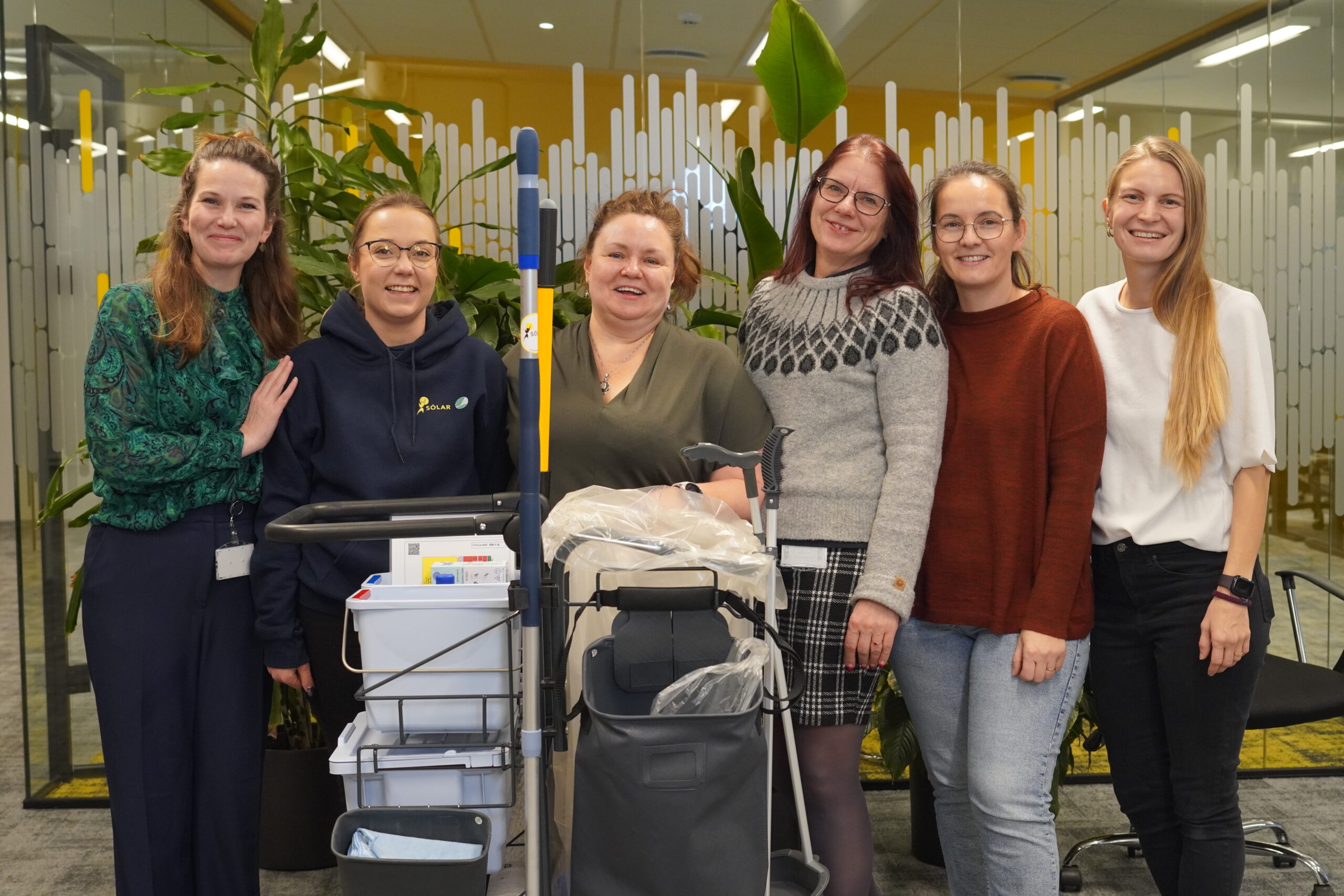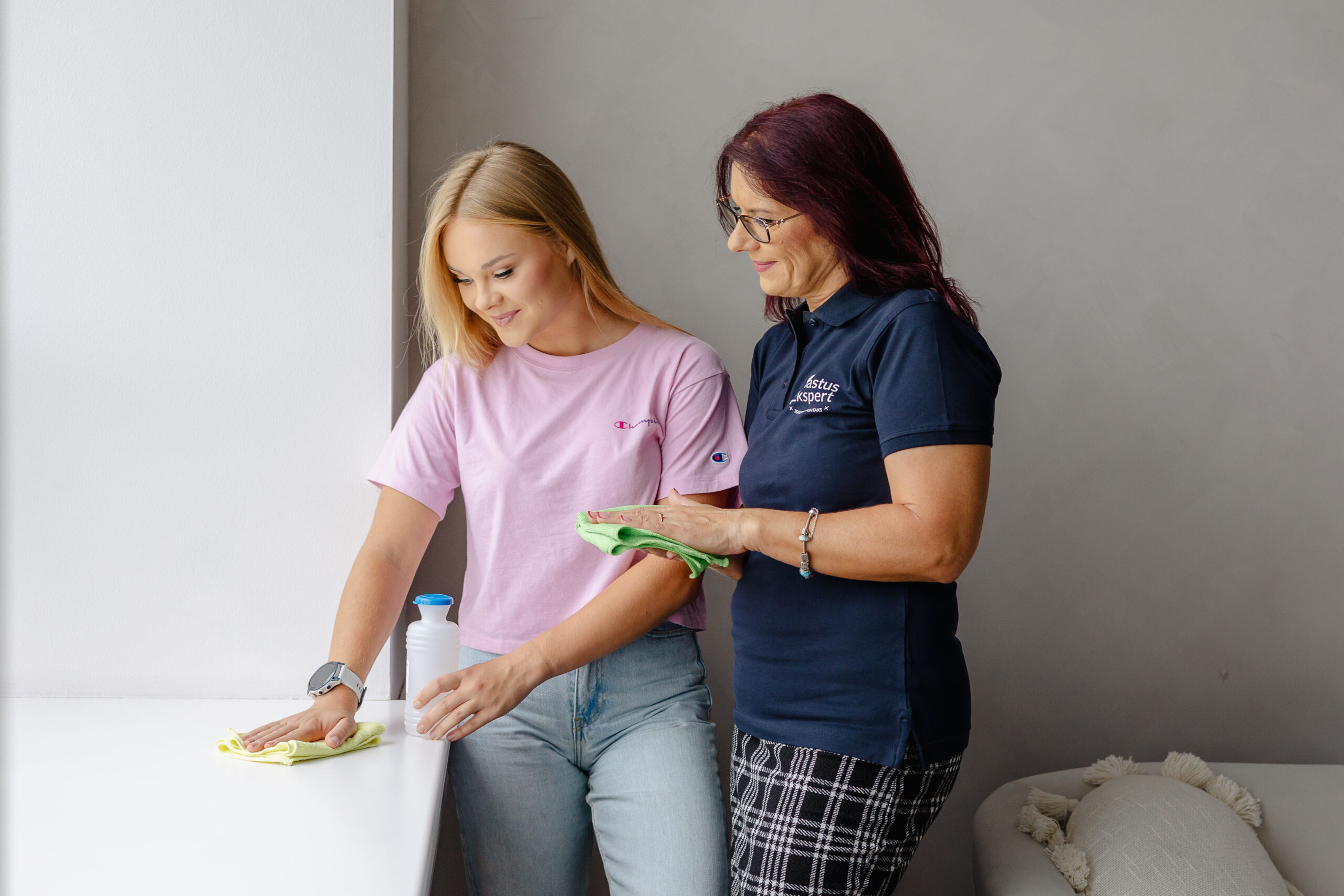Job shadowing to Italy from 27 to 30 May 2025
 Led by Puhastusekspert, another inspiring and content-rich Erasmus+ study visit took place from 27 to 30 May 2025, this time to Milan, Italy.
Led by Puhastusekspert, another inspiring and content-rich Erasmus+ study visit took place from 27 to 30 May 2025, this time to Milan, Italy.
Participants included P. Dussmann, Eesti Liinirongid AS, Tartu Vocational College, Uma Puhastus OÜ, Viljandi Hospital AS, Elva Hospital AS, SOL Baltics OÜ, North Estonia Medical Centre, Tartu Health Care College, and Arkaadia Puhastus OÜ. The study visit was supported by Erasmus+ consortium mobility projects no. 2023-1-EE01-KA121-VET-000133792 and 2024-1-EE01-KA121-VET-000236654.
The aim of the study visit was to gain an overview of Italian cleaning practices, technologies, sustainable procurement processes, and work organization, to understand how cleaning companies are managed sustainably and how infection control is ensured in Italy. The goal was also to broaden international contacts and bring best practices back to develop Estonia’s cleaning sector while enhancing the competencies of cleaning sector trainers.
How does cleaning differ in Italy?
A specific feature of the Italian cleaning sector is that the market is largely dominated by machines, tools, and paper products manufactured in Italy. Industry associations include both cleaning companies and manufacturers. There is a recognized need for joint development in the field, with training for both manufacturers and service providers.
Major efforts are being made to ensure that the competencies of various cleaning roles are harmonized throughout Italy and more broadly in Europe. For this, the European Qualification Framework (EQF) is an excellent unified system. Although not yet implemented in Italy, they are striving toward it. We are proud to say that this system has been in use in Estonia for over 20 years, and in this regard, we are in a position to advise organizations in Italy. Read more about the EQF and qualification awarding in Estonia here.
 ISSA Pulire 2025 – Europe’s leading cleaning trade fair
ISSA Pulire 2025 – Europe’s leading cleaning trade fair
The ISSA Pulire fair in Milan was one of the highlights of the study visit. It is one of Europe’s largest trade fairs for professional cleaning services and technologies. In addition to product and equipment exhibitions, we also took part in seminars, workshops, and conference presentations.
Among the most interesting topics were cleaning ergonomics, optimization of techniques, measuring and improving cleaning efficiency, air purity and ventilation requirements, innovative cleaning solutions, cleaning procurement regulations in Italy, and the application of ESG principles in the cleaning sector.
Innovation in cleaning
During the ISSA Pulire fair, the Cleaning Innovation Awards were presented. Our consortium decided to select our own favorites – here is our Top 5:
5. Ergotec Window Cleaning Gloves
-
Window cleaning gloves that keep hands dry and warm
-
Nice design and functionality
-
Rubber details ensure good grip
Consortium comment: They don’t get wet inside and are very comfortable. We especially liked that your hands stay warm during window cleaning. The gloves are thick but not uncomfortable to work with.
4. Unger Green Label tools for glass cleaning
-
The first certified sustainable product line for professional glass cleaning
-
Tools and accessories are certified: C2C Material Health Certificate™ Silver, EU Ecolabel, FSC Mix Credit
-
High quality and eco-friendliness; all products are designed to meet both professional needs and strict environmental standards
Consortium comment: A well-thought-out product line, where each tool has a clear purpose. Nice design.
3. Makita PS001GZ battery-powered floor maintenance machine
-
Very lightweight (under 2 kg)
-
Allows access to areas unreachable by large cleaning machines
-
Ideal for cleaning and polishing stairs and even walls
Consortium comment: Impressive 40V battery, compact design, and adjustable telescopic handle – a tool designed for user comfort and freedom of movement. Speed control, soft start, and LED lighting make it smooth and professional to use. A great choice when a mobile, reliable, and precise cleaning tool is needed. Cordless, powerful, ergonomic, and versatile. Suitable across multiple sectors.
2. DRYFT floor cleaning machine
-
The world’s first S-Motion floor cleaning-drying device, capable of cleaning up to 100 m² in just 3.9 minutes
-
Effective cleaning with a vibration frequency of 4,200 rpm
-
DRYFT features a patented cleaning handle – you use the machine as if you were mopping
Consortium comment: Small and compact floor cleaner. Effective in hard-to-reach places, usable in tight spaces. Comfortable to use and gives a mopping-like feel.
1. I-Walk Co-Botic (our consortium’s favorite and also the official innovation award winner)
-
Can convert the I-mop into a robot
-
High efficiency – cleans up to 700 m² on a single charge
-
Easy to configure and has a sleek design
Consortium comment: I-Walk impressed us with its ability to navigate independently and precisely, thanks to smart sensor technology. This machine doesn’t replace the worker but supports them – reducing physical strain and taking over large-scale routine tasks. This means the worker can focus on more detailed and meaningful tasks, which increases job satisfaction and motivation.
It’s not just a time-saver – it’s a way to value employee contribution and strengthen their role in the workplace.
Innovation here lies not only in technology but also in the approach to human–machine cooperation.
In addition, we had the opportunity to job shadow at several major companies such as Kiehl, Unger, Cartiere Carrara, and Sprintus. During job shadowing, we were able to test various cleaning tools and machines and see their effectiveness firsthand. We explored different cleaning methods and compared processes between Italy and Estonia. It was especially helpful to be able to ask questions and get immediate answers from the source.
Job shadowing at San Raffaele Hospital
The San Raffaele Hospital in Milan was one of the highlights of our study visit. It is one of Italy’s largest and most prestigious private hospitals, where we observed the entire cleaning cycle—from preparation in the cleaning room to cleaning general areas and operating rooms, all the way to post-cleaning procedures.
Founded in 1971, San Raffaele is a research hospital and university outpatient clinic of Vita-Salute San Raffaele University. It provides specialized treatment for the most complex health issues and was recognized in 1972 as a research and treatment institute for diabetology.
The hospital has over 60 specialized clinical units and receives 1.9 million patient visits annually.
The cleaning practices were of a high standard, though somewhat different from those in Estonia. For instance, they do not use pre-moistened textiles, moistening bottles, or pre-cleaning of mops before washing in the machine.
At San Raffaele, there was a strong focus on patient satisfaction, patients should feel as if they are in a hotel while receiving top-class medical services.
Reflections and insights from the study visit:
-
Cleaning is often a cultural topic – cleaning practices vary greatly across countries. In truth, cleaning is a science, and decisions must be based on data; dirt removal should be a conscious process. This requires international cooperation and shared knowledge-based training.
-
We need common principles and rules, as the goal of being effective is universal. Actions must be aligned with a purpose that creates VALUE.
-
The training of the sector needs renewal – more robots and AI are involved, but also a new perspective is needed to give cleaning meaning and value.
-
Experience and research show that longer trainings make people happier and add more value, as people begin to act more consciously. Implementing change takes time; short trainings often lack the system needed to support real change.
-
A challenge in developing and training the sector is how to help people feel proud of their work, understand its value, and want to learn. How to engage a new generation? Where to find the resources for teaching?
-
Client awareness is key! The sector needs appropriate ways to educate clients.
-
Cleaning is a well-being service, often directly impacting a person’s health or even life. We are affected by invisible dirt such as microorganisms and air quality. In this context, measurements are crucial for decision-making; without data, decisions become assumptions, which are not sustainable or relevant.
-
To involve the younger generation, we must explain WHY cleaning is important and what role it plays in our everyday lives.
-
Every country has its own methods of removing dirt. We don’t need to argue over which cloth or brush someone uses. What matters is achieving the desired cleanliness not just spreading the dirt around.
-
The goal isn’t to use only eco-labelled cleaning products. The real aim is to create cleanliness efficiently while conserving resources (workforce, tools, cleaning agents).


 Led by Puhastusekspert, another inspiring and content-rich Erasmus+ study visit took place from 27 to 30 May 2025, this time to Milan, Italy.
Led by Puhastusekspert, another inspiring and content-rich Erasmus+ study visit took place from 27 to 30 May 2025, this time to Milan, Italy.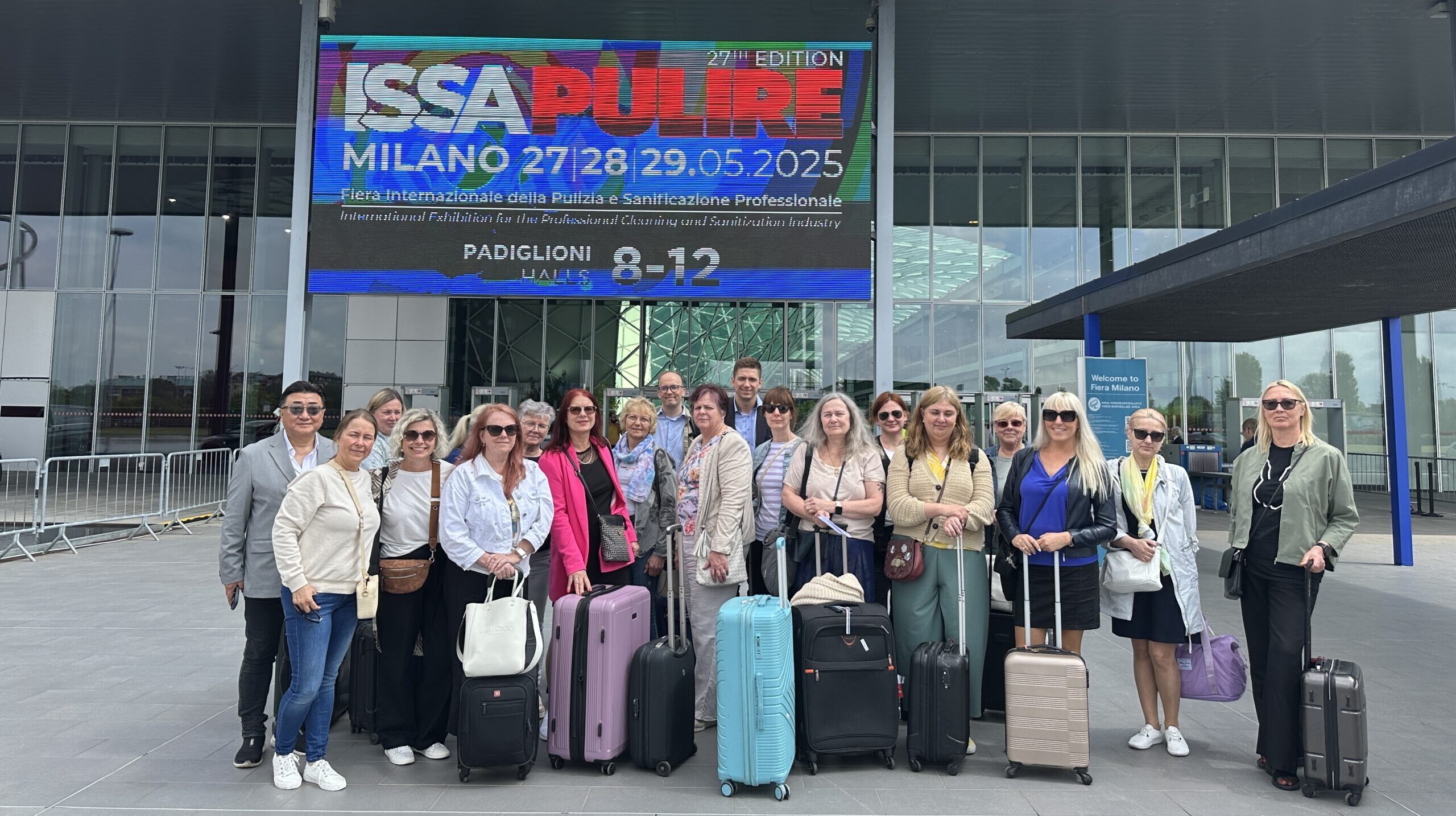 ISSA Pulire 2025 – Europe’s leading cleaning trade fair
ISSA Pulire 2025 – Europe’s leading cleaning trade fair